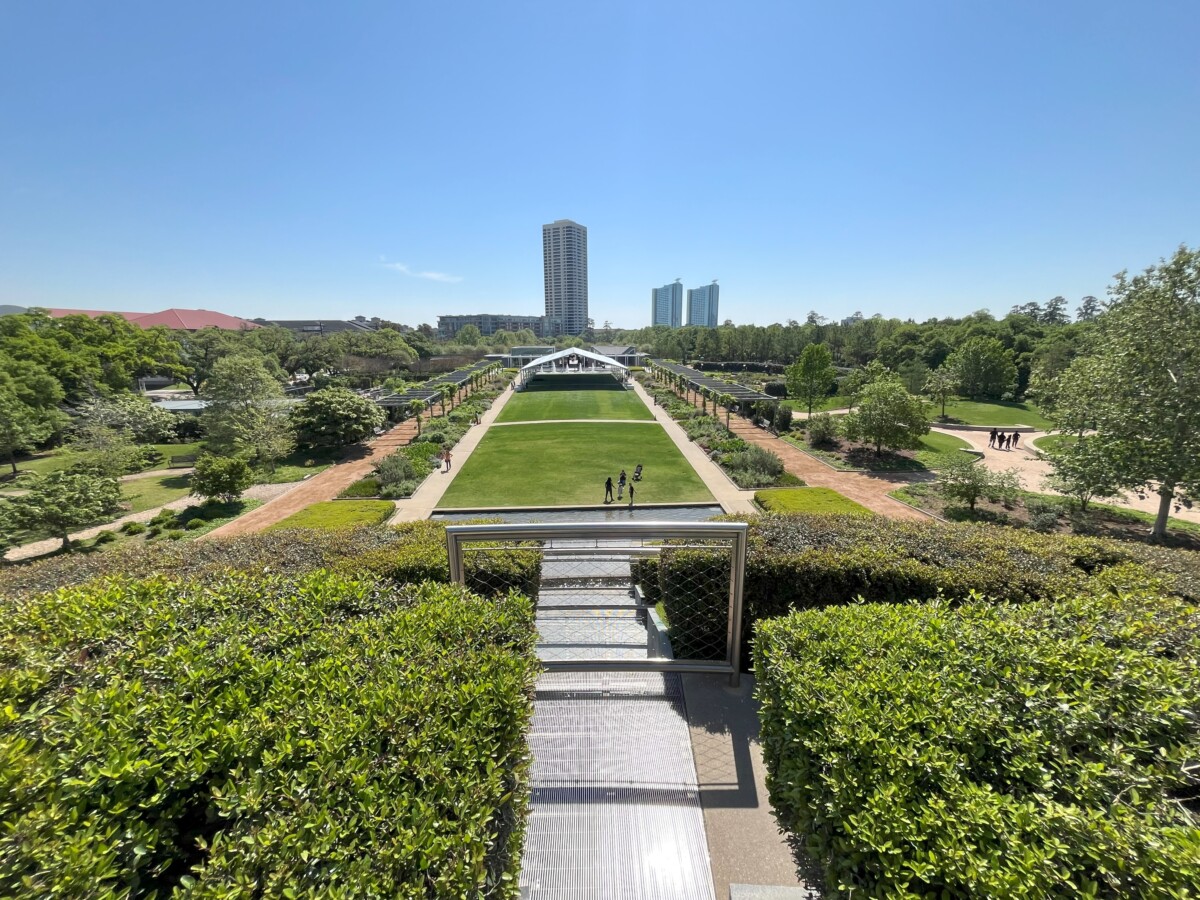On our recent trip to Houston, we experienced Houston like tourists. Since most activities for a family wedding were located near the Museum District, we spent a morning at Hermann Park, followed the next day by a visit to the Museum of Fine Arts Houston – MFAH.
Hermann Park
New York has Central Park, Atlanta has Piedmont Park, and San Francisco has Golden Gate Park. Houston’s equivalent is Hermann Park. Bordered by Rice University, Texas Medical Center, and the Museum District, the 445-acre Hermann Park offers activities galore.
One can easily spend lots of time here with the Houston Zoo, a public golf course, a dog park, the McGovern Centennial Gardens, the Japanese Gardens, and the Pioneer Memorial Obelisk. Additionally, you can hike the Marvin Taylor Trail, rent pedal boats, fish in Lake McGovern, ride a carousel, and eat at the restaurant. To the delight of many children, a small train even takes guests 18 miles to stops throughout the park.
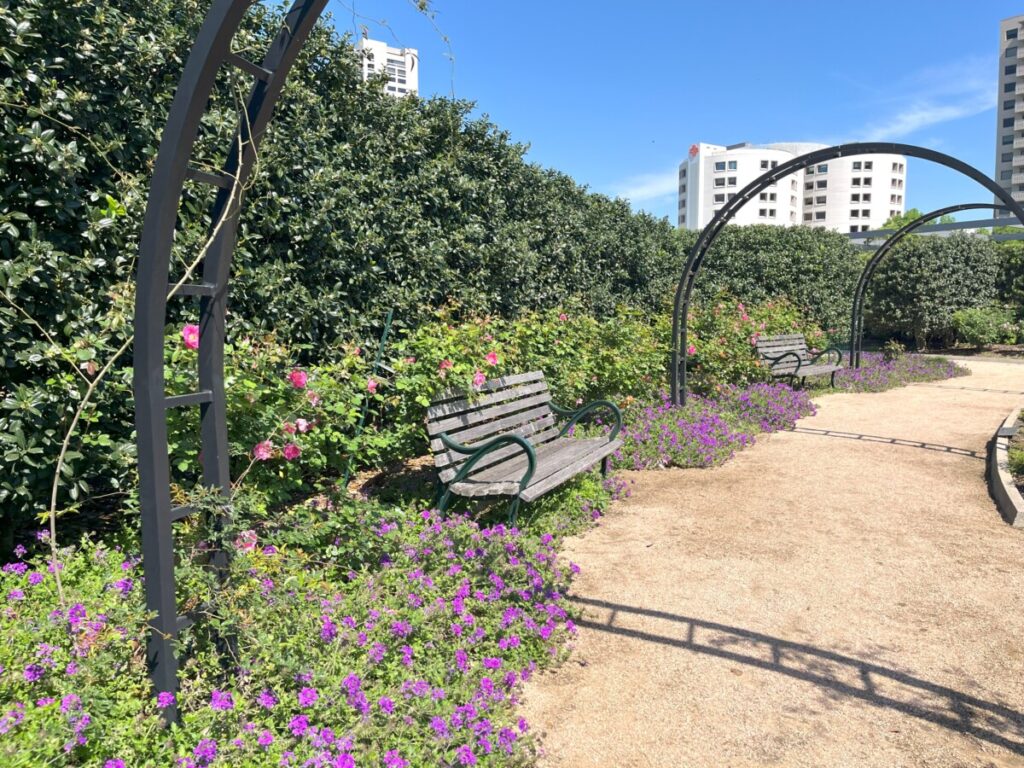
The park began over a century ago when wealthy real-estate investor George H. Hermann donated 285 acres to the city for a park. He also left funds to build and maintain Houston’s first charity hospital nearby. You can read more about Hermann, considered peculiar and eccentric, in this 1986 article from Texas Monthly.
Over the years, the park grew in acreage and activities. On this visit, we only explored the McGovern Centennial Gardens, the Japanese Gardens, and the Memorial Pioneer Obelisk.
McGovern Centennial Gardens
In 2014, city leaders established the 15-acre McGovern Centennial Gardens to commemorate the 100th anniversary of Hermann Park in the former location of the Houston Garden Center. Upon entering the gardens from the parking lot at the Cherie Flores Pavilion, a 350-foot green space leads to a waterfall descending from a 30-foot high garden mount. Pegola gardens flank both sides of the green space.
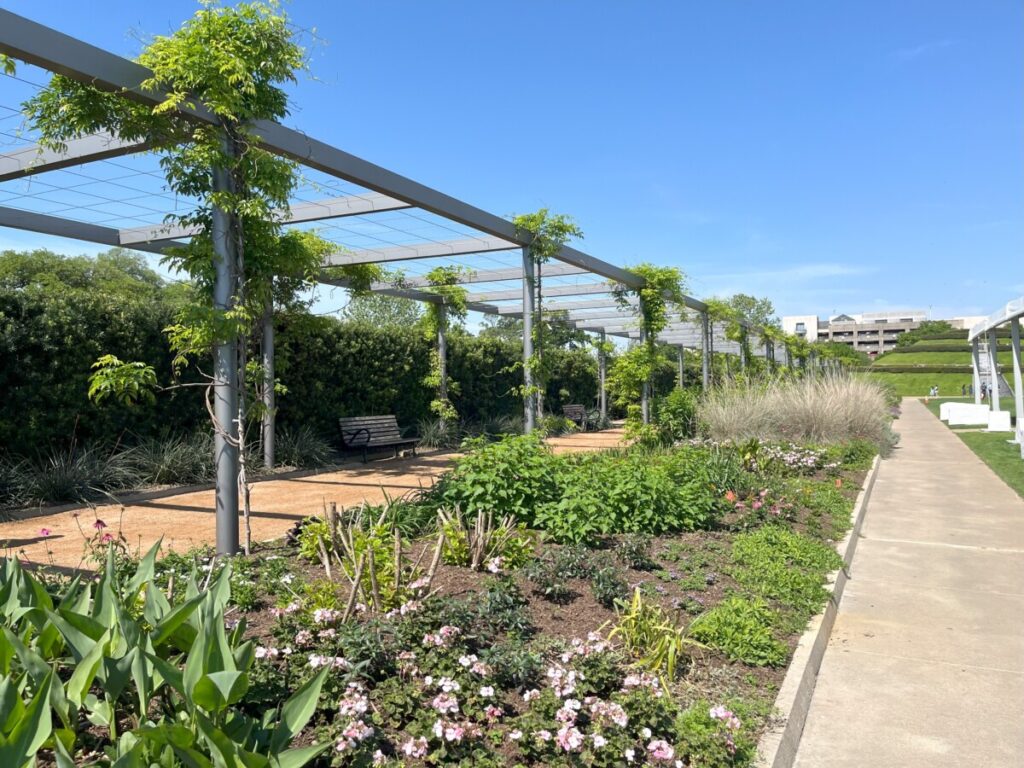
To the west of the Pergola Walk, we took the Tudor Family Pine Hill Walk. The area includes a statue of Confucious and an ornate pagoda. A gift from Tapei, the Friendship Pavilion sits among the pine trees, offering plenty of shade.
McGovern Centennial Gardens features various “garden rooms.” We strolled through the Rose Garden with winding pathways and trellises before arriving at the Arid Gardens. The Texas sun and drought conditions necessitate the need for drought-tolerant plants. While the yuccas and agave plants resemble a landscape in New Mexico, these plants also do well in the Texas heat.
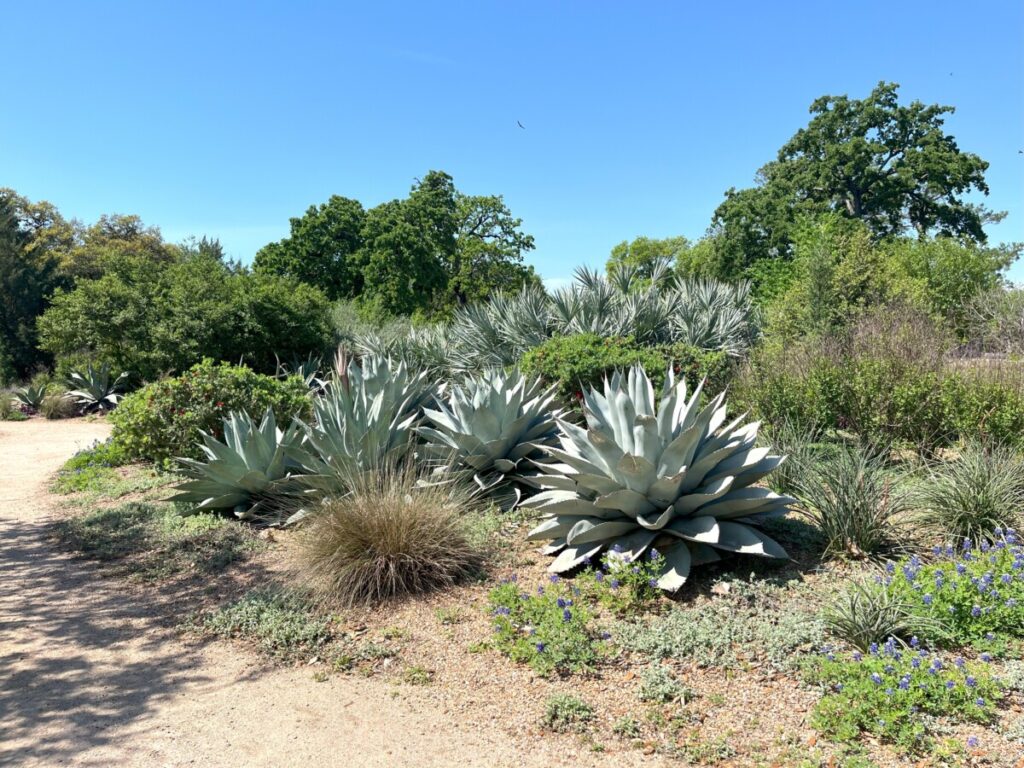
A spiral-shaped path led to the top of the Garden Mount. The path crossed over the waterfalls several times. At the top, concrete benches allow visitors to take in 360-degree views of Houston and the Miller Outdoor Theatre.
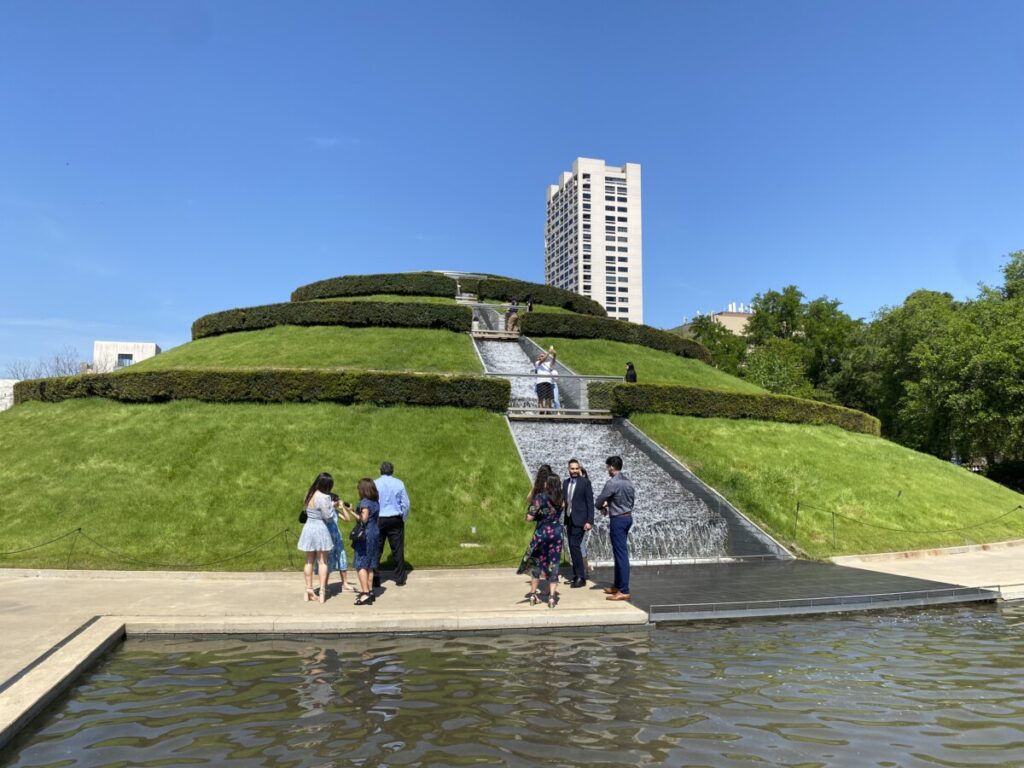
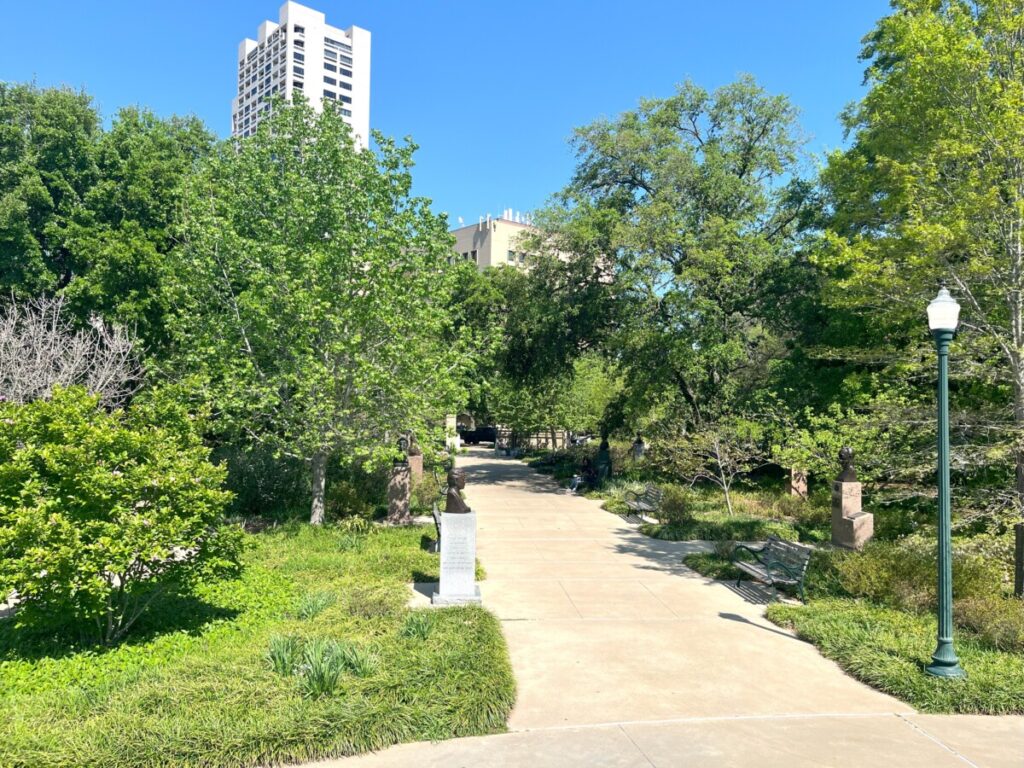

The last garden room is the Celebration Garden, but it was closed to the public for a wedding later that evening. From here, we went to the other side of Hermann Park to explore the Japanese Gardens.
Japanese Gardens
In 1992 the city and the Japanese Business Association of Houston (JBAH) established the Japanese Gardens. Landscape architect Kim Nakajima designed the space full of symbolism with winding paths, lakes, a small waterfall, and even a tea house.
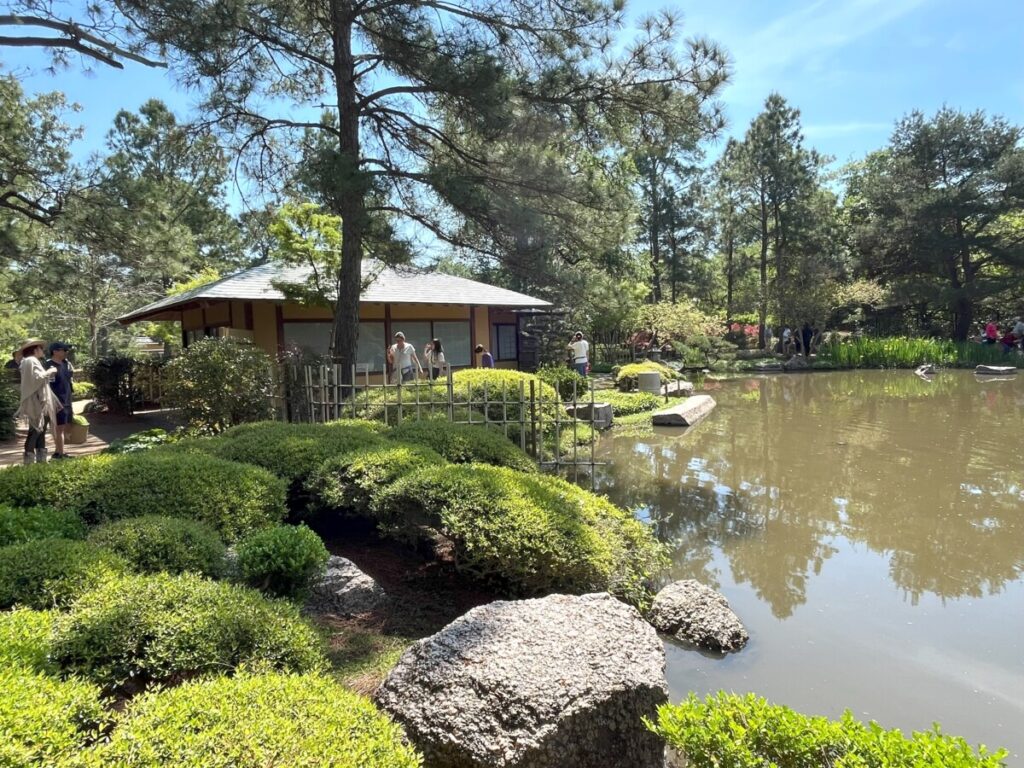
The Prime Minister of Japan donated a teahouse that was disassembled and shipped to Houston. A trail of stepping stones leads to the teahouse from a smaller “waiting pavilion.”
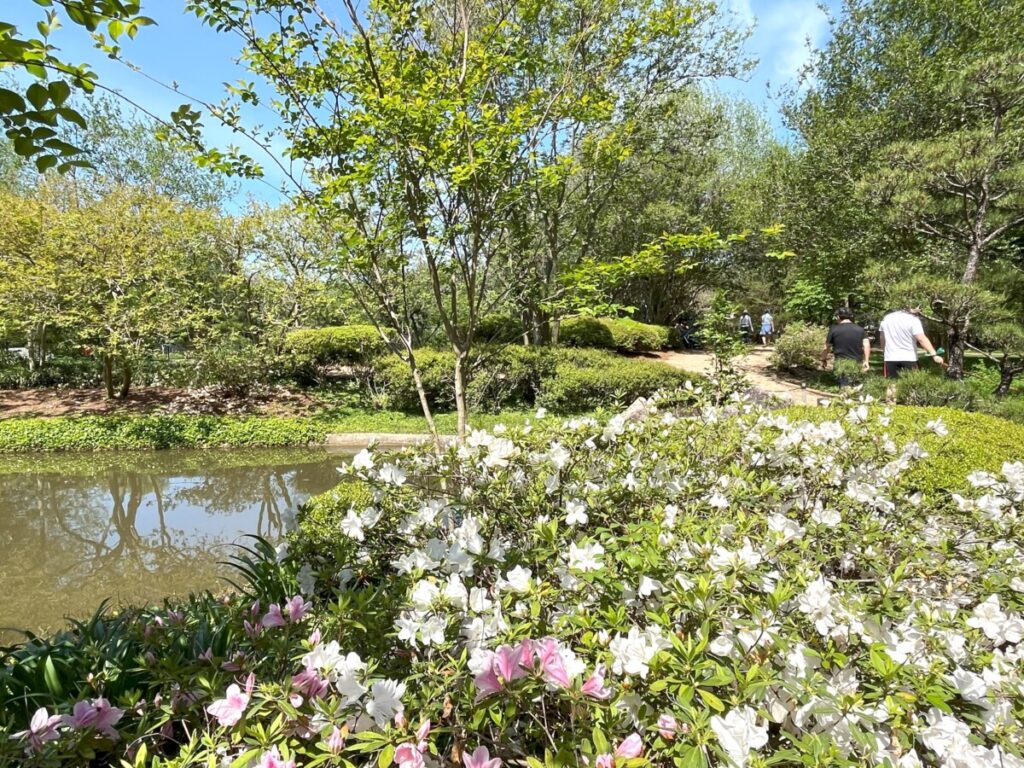
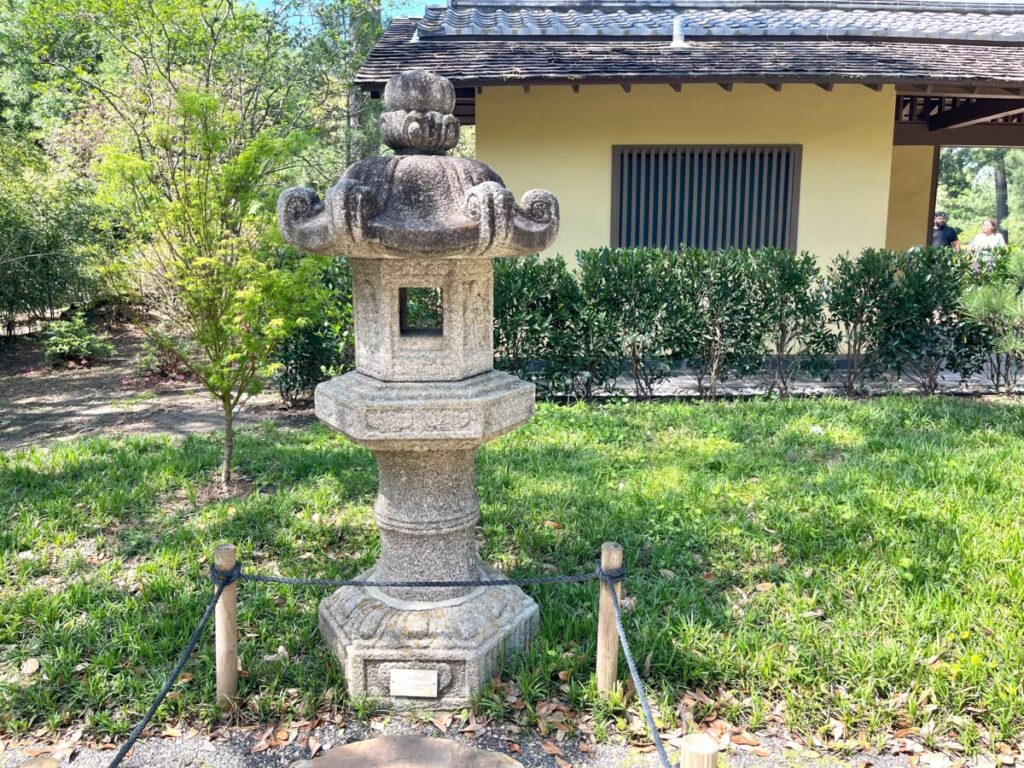
A Nagaya-Mon, or small building, marks the original entrance. Near Fannin Street, a Kabuki-Mon, or wooden hanging gate, marks a newer garden entrance. This leads to a dry stream bed, called Karesansui, where a couple of kids enjoyed climbing on the rocks.
Pioneer Memorial Obelisk
A few steps beyond the main entrance of the Japanese Gardens, the landscape completely changes to a wide-open expanse where we found ourselves at the Pioneer Memorial Obelisk. Erected in 1936, the granite obelisk marks the 100th anniversary of Texas independence (remember the Alamo!). Fountains surround the monument in the Molly Ann Smith Plaza. To the north, the Mary Gibbs and Jesse H. Jones Reflection Pool stretches toward the Museum District.
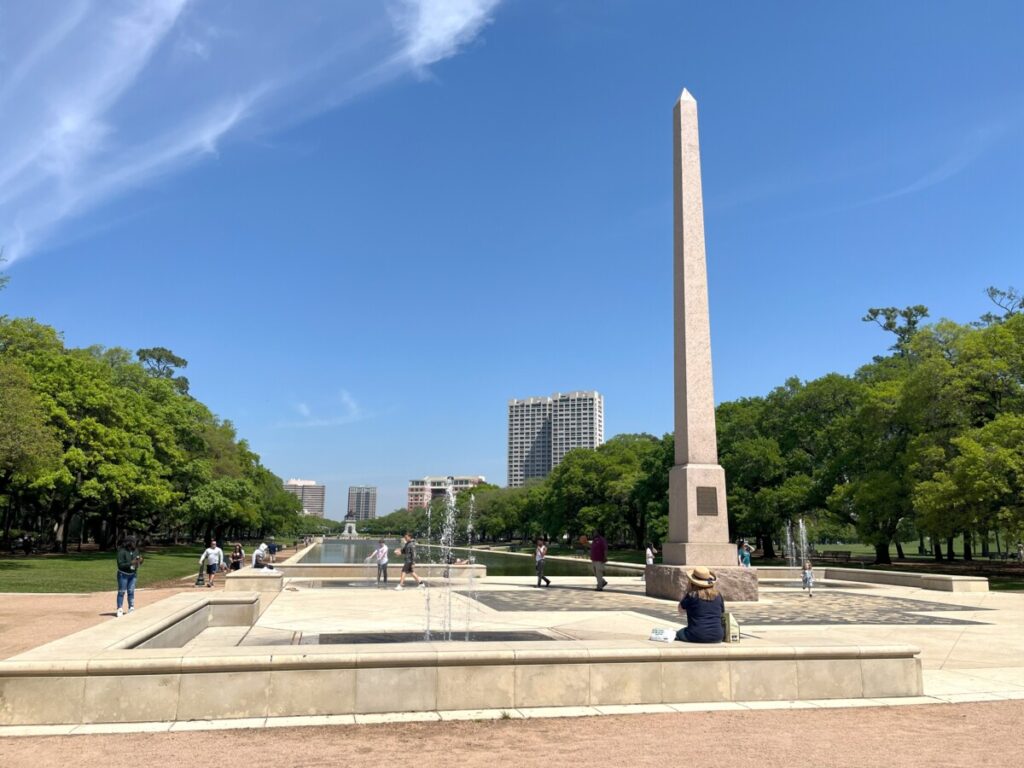
To the south lies McGovern Lake, a peaceful 8-acre lake. Children hunted for Easter eggs hidden in the grassy area next to the lake on the day we visited. Beyond the lake is the Houston Zoo, with an African Forest, Children’s Petting Zoo, and over 6,000 animals.
In Conclusion
Hermann Park is worthy of a visit whether you have an hour or a few days to spend. The three places we visited are free of charge. However, the zoo charges admission fees. For more information, including hours and special events, visit the park’s website here.
